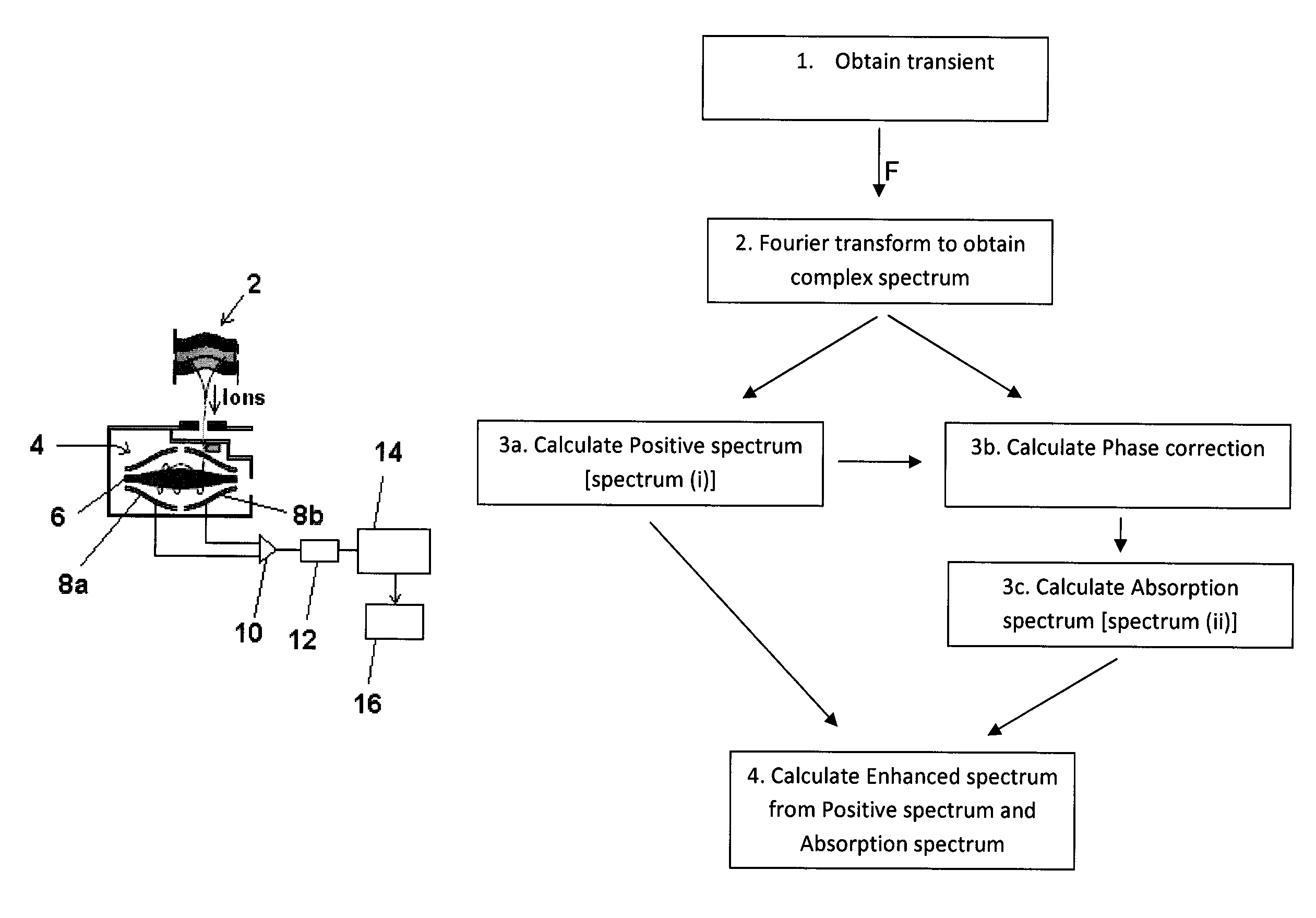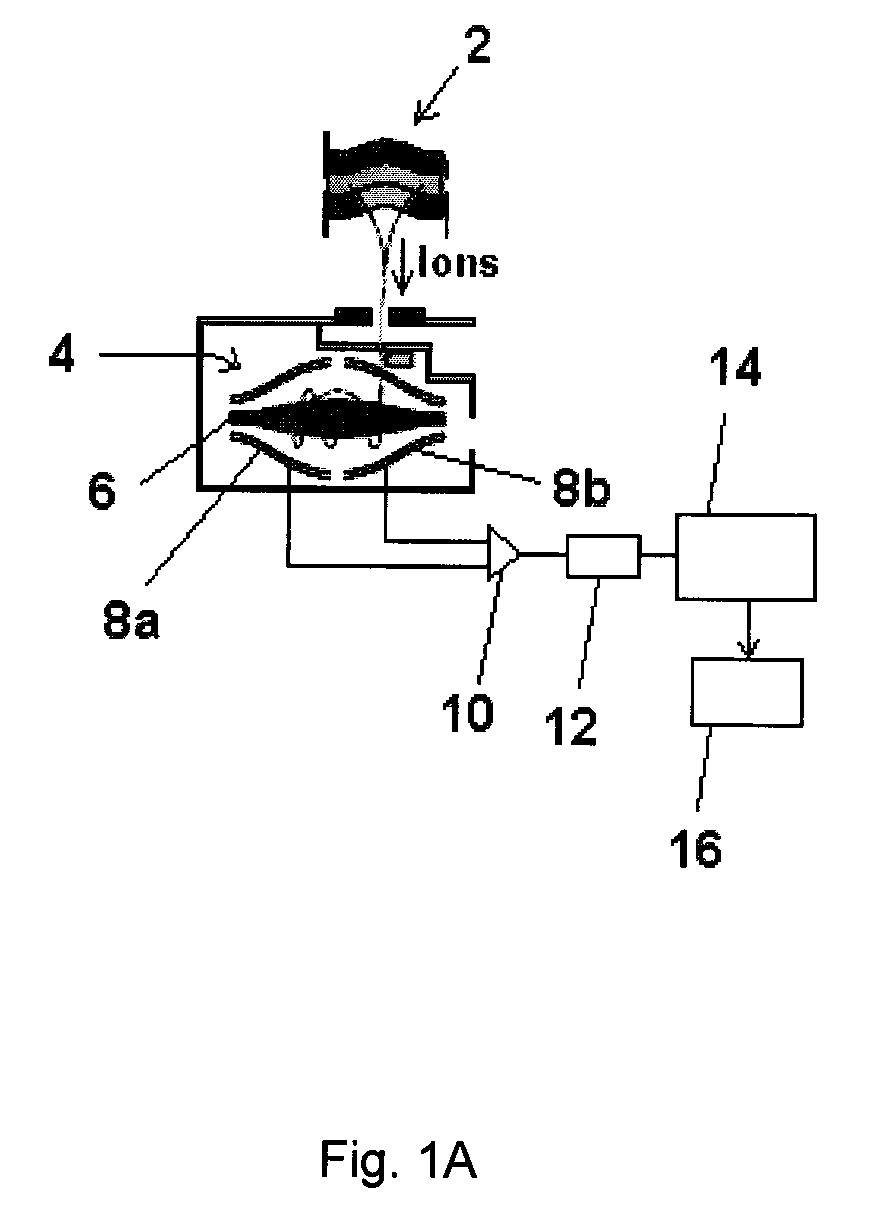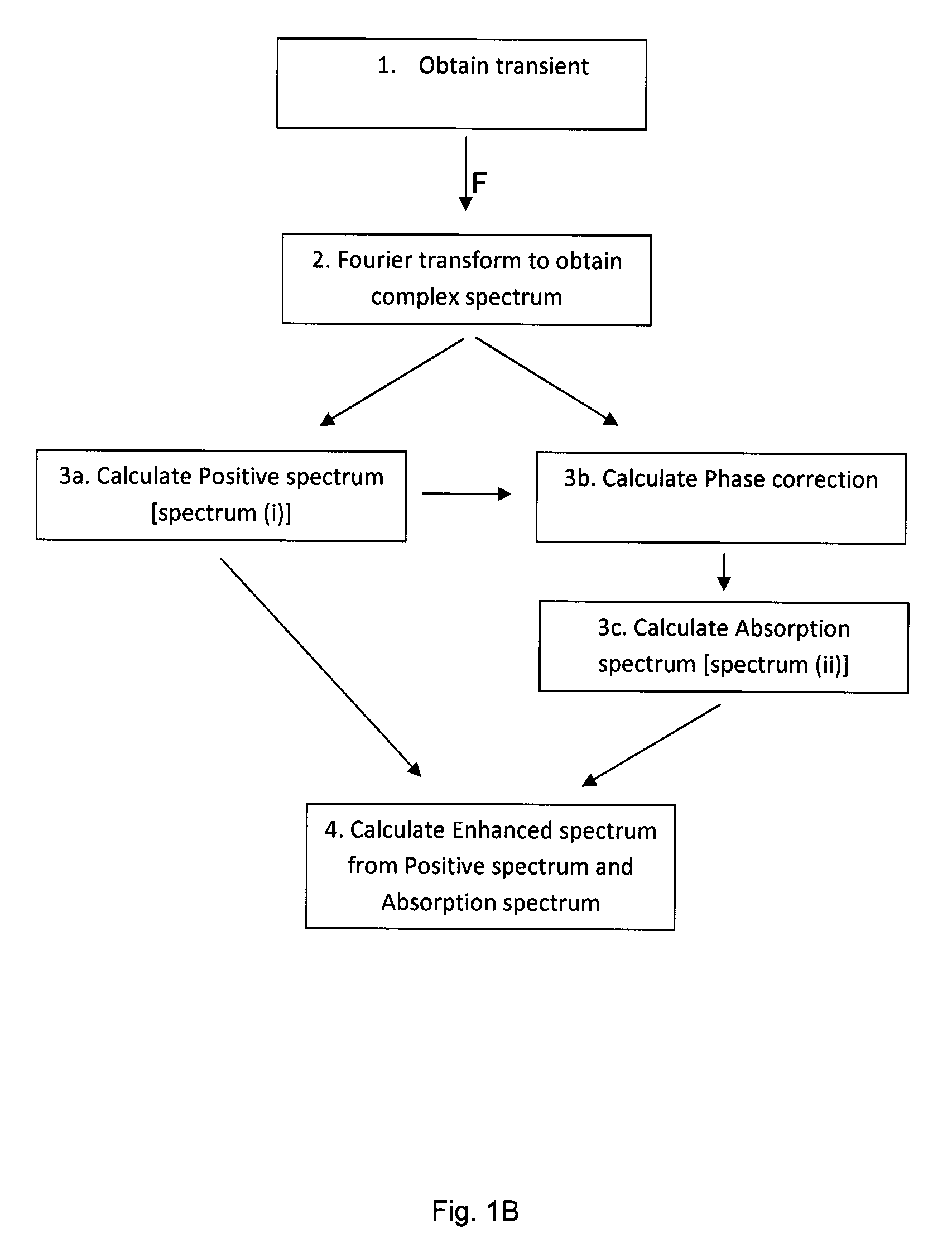Methods and apparatus for producing a mass spectrum
a mass spectrum and apparatus technology, applied in mass spectrometers, isotope separation, particle separator tubes, etc., can solve the problems of difficult or prohibitively expensive changes in the field geometry and voltage of orbitrap-ms, and the need for relatively long detection times to achieve high resolving power, etc., to achieve a simple and robust method
- Summary
- Abstract
- Description
- Claims
- Application Information
AI Technical Summary
Benefits of technology
Problems solved by technology
Method used
Image
Examples
Embodiment Construction
[0126]In order to more fully understand the invention, it will now be described in more detail with reference to the accompanying Figures in which:
[0127]FIG. 1A shows schematically part of an apparatus according to the present invention;
[0128]FIG. 1B shows a schematic flow diagram of an example of a method according to the present invention;
[0129]FIG. 2A shows an “ideal” transient for just a few oscillations of a single frequency (m / z) component;
[0130]FIG. 2B shows a transient for just a few oscillations of a limited number of frequency (m / z) components;
[0131]FIG. 3 shows the Fourier transformation of the ideal single frequency signal shown in FIG. 2A together with the magnitude mode spectrum;
[0132]FIG. 4 shows a plot of several individual transient components and their phase coincidence at t0;
[0133]FIG. 5 shows a plot of the deviation of the phases of multiple transient components as a function of delay time, ttest;
[0134]FIG. 6, shows a plot of the phase against frequency for selec...
PUM
 Login to View More
Login to View More Abstract
Description
Claims
Application Information
 Login to View More
Login to View More - R&D
- Intellectual Property
- Life Sciences
- Materials
- Tech Scout
- Unparalleled Data Quality
- Higher Quality Content
- 60% Fewer Hallucinations
Browse by: Latest US Patents, China's latest patents, Technical Efficacy Thesaurus, Application Domain, Technology Topic, Popular Technical Reports.
© 2025 PatSnap. All rights reserved.Legal|Privacy policy|Modern Slavery Act Transparency Statement|Sitemap|About US| Contact US: help@patsnap.com



